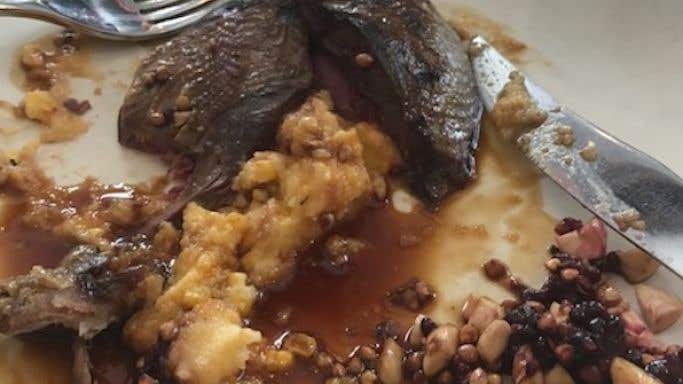The second half of August and the beginning of September is, to my mind at least, the best time to eat in the UK, whether in restaurants or at home.
First of all there is personal preference: I love fish, pasta and vegetables to a certain degree but basically I am a carnivore. And this period happens to be when grouse, the game bird of which the British are so proud, are at their best.
Grouse shooting, which marks the beginning of the game season, begins on 12 August (the Glorious Twelfth as it is known – except by the grouse) although the birds are never at their best until 10 to 14 days have elapsed. On Wednesday we were treated to a description of how a recently killed bird compared with one that had been shot last year and carefully vacuum packed before being cooked. ‘No comparison', explained the no-nonsense wife of the man who shot them. ‘Last year’s bird was much tastier.’
This discussion took place just before a lunch was due to start at which the main course read, ‘First of the season grouse, polenta, blackberries, cobnuts and kasha’ (eastern European buckwheat). This international combination, with grouse from Yorkshire, Kent cobnuts and Italian cornmeal is pictured here, and was my first example this year of how the cooking of grouse is changing.
This meal took place at Trinity restaurant in Clapham, London SW4, a restaurant redesigned a couple of years ago by chef Adam Byatt so that its open kitchen faces you as you walk in and glass windows slide open at the front on to the pavement (which proved a disadvantage when a digger went past just as the birthday girl began her speech). The meal was very good, particularly the confit of wild salmon with a rich tomato-butter sauce and the tarte Tatin in a pan to share that made a suitably sticky finale. But did the two grouse breasts plus the one grouse leg fully justify the description on the menu?
Two days later I was ordering grouse again, this time at our son’s restaurant, Portland. It was on the blackboard after a first course of papardelle with venison and was described as follows: Yorkshire grouse, faggot, fig jam, burnt aubergines and chanterelles.

Seen above is this complicated, but ultimately satisfying, dish produced by another open kitchen, but again, while the dish lived up to its description, did it live up to my visualisation of what a Yorkshire grouse should be?
Part of the mismatch is obviously the difference between what I have in mind and what these two talented chefs have in mind as well as the difference in our relative cooking abilities. I can roast a grouse and serve it simply with its jus, some potatoes and a salad (better than game chips and definitely much better than with a bread sauce), but how much talent will that show off? As much as making the polenta, cracking the cobnuts, making the faggot, the fig jam and ‘burning’ the aubergines. I don’t believe that it would.
There are numerous London restaurants that could satisfy my desire for plain roast grouse, but they are even older than I am: restaurants such as Rules in Covent Garden or Boisdale, for example. But it seems that the more innovative restaurants have turned their back on this style of cooking. At Core, Clare Smyth’s new restaurant in what was Prue Leith’s first restaurant in 1969, she served roast grouse, red cabbage and bell heather to the Evening Standard’s Fay Maschler to the latter’s disappointment. The grouse had been cooked sous vide before finishing, which, to the eater’s palate, resulted in a flabby, liverish result that was not much, according to London’s most famous restaurant critic, improved by forcemeat ball.
Towards the end of our meal at Trinity, when the table-hopping had got under way, Ed Wilson, the highly personable chef/proprietor of Brawn in east London, came to sit next to me. Having congratulated him on the impeccable behaviour of Manny, his eight-week-old son, I asked him about the reaction to the day’s grouse dish of his neighbour, the well-known food writer Simon Hopkinson. ‘Hoppy’ is known for the simplicity of his recipes; his recipe for roast grouse in Country Life on 12 August 2017 comprises grouse, butter, salt, pepper and two thick slices of white bread and that is it.
Wilson raised his eyebrows but then, sagely, put the whole question into perspective. ‘It’s as though every new chef in every new restaurant feels as though they have the right to experiment with grouse. I am not sure why, whether it’s an attempt to keep the price down, to spark enthusiasm, to gain attention. But grouse does fit the label of the perfect ingredient for so many chefs today. It is wild, it is seasonal, and it is good for you. Simply roast grouse has always worked for me.’

